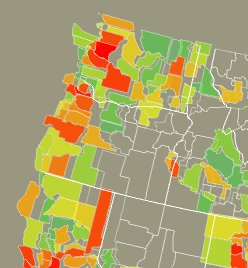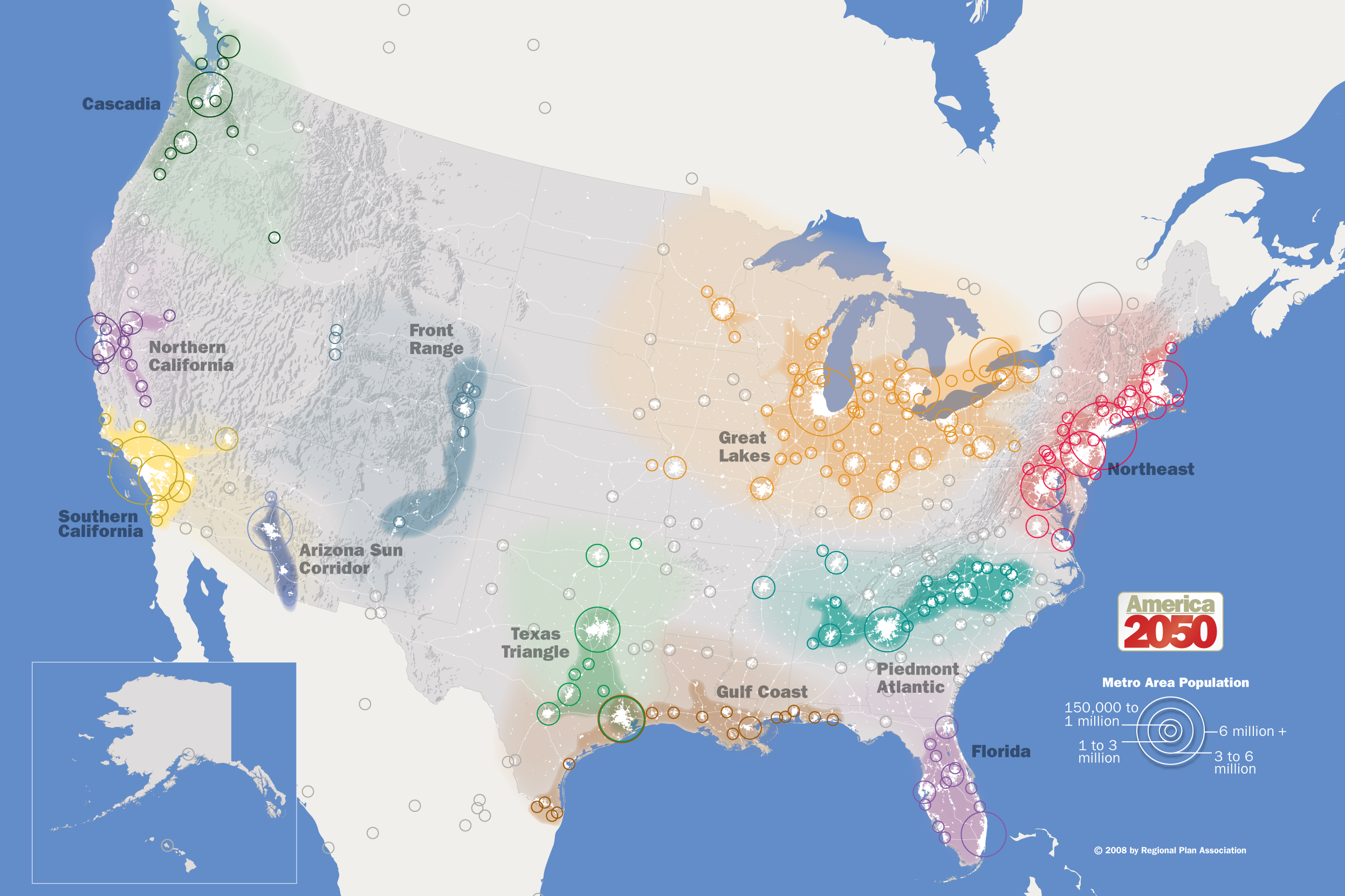Researchers at MIT Senseable City Lab, working with AT&T Labs and IBM Research have revealed a very nice set of data visualizations that redefines regional boundaries within the United States, using patterns of social connectedness derived from aggregated cellphone communication patterns. The project, "The Connected States of America" illustrates emerging communities defined by social interaction. The Cascadia bioregion features prominently in the illustrations, with the connections helping to better represent the social and cultural realities that are emerging in the Pacific Northwest, and the increasing fragmentation and cultural clustering currently underway throughout the rest of the country.
"Our interactions define new communities... which go beyond traditional state boundaries... with states splitting and merging together "
The data visualizations were derived from 2011 studies by looking at billions of instances of aggregated cell phone communications, working to redefine communities through the informal lens of social networks, hopefully allowing policy makers to utilize the data to increase the democratic process. Carlo Rotti, director of MIT Senseable Labs stated: "We are particularly interested in how such rich information can help us gain a better understanding of our society, which in the future, could lead to more democratic, bottom-up structures of governance."
 Investigating these social interactions reveals interesting patterns for how people utilize space, and more than that, interact not only within that space, but with society at large, between neighborhood, city, county, state and region, defining what community really means in 21st century America. In this newly regional model, cities play an important role, helping to pull nearby counties into their radius of influence, create commuting patterns, influence economic and environmental landscapes, and when they overlap, combine to create a new form of spatial geography and interaction known in the Pacific Northwest as the Cascadia Megaregion.
Investigating these social interactions reveals interesting patterns for how people utilize space, and more than that, interact not only within that space, but with society at large, between neighborhood, city, county, state and region, defining what community really means in 21st century America. In this newly regional model, cities play an important role, helping to pull nearby counties into their radius of influence, create commuting patterns, influence economic and environmental landscapes, and when they overlap, combine to create a new form of spatial geography and interaction known in the Pacific Northwest as the Cascadia Megaregion.
In addition to this, working on a bioregional framework also appears to be important and researchers found that Mountain ranges and other geographic features influence how people interact, because they contribute to an increased perception of distance and therefore hinder communication.
The result findings are also very similar to what the federal policy and planning organization America 2050 has argued, defining roughly 11 megaregions in the United States. America 2050 is Regional Plan Association's national infrastructure planning and policy program, providing leadership on a broad range of transportation, sustainability, and economic-development issues impacting America's growth in the 21st century.
A megaregion is defined as an area where “boundaries begin to blur, creating a new scale of geography”. These areas have interlocking economic systems, shared natural resources and ecosystems, and common transportation systems link these population centers together. In the Pacific Northwest, the Cascadia megaregion contains 17% of Cascadian land mass, but more than 80% of the Cascadian population.
These arguments also help to strengthen the idea that while we here in the Pacific Northwest are a part of very large countries, the United States and Canada, we still possess distinct cultural elements – language, literature, affiliations, communications – and an awareness of ourselves as members of a community which extends throughout our region, rendering many traditional boundaries obsolete and irrelevant. This idea of common bonds and character – are transmitted through media, newsprint, education, sports, and at it’s base root – our individual communications on an interpersonal level.
The Pacific Northwest is unique – in North America, and in the world abroad. We continue to be connected in ways that challenge traditional modes of governance, aspiring to better ways of conceiving of community, locality, geography, and ecology.
More information can be found on the MIT website: http://senseable.mit.edu/csa/







